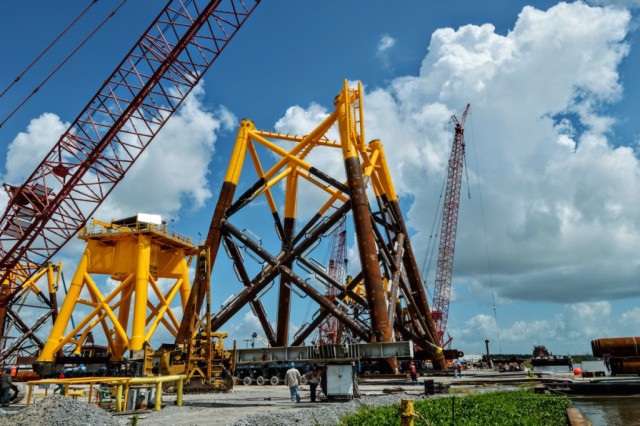December 9, 2015
Keystone Engineering provided an innovative jacket-type support structure design for five, 6-megawatt wind turbine generators on America’s first offshore wind farm. Supplying power to Rhode Island’s Block Island and the rest of New England via subsea cable, the 30-megawatt Block Island Wind Farm was chosen to kick start offshore wind farms. This location was chosen because the cost of electricity in this region is four to five times higher than in other parts of the U.S. The design was selected because it significantly reduces the cost of steel required for the wind farm, can be installed in great water depths, and can operate in a larger weather window.
For this USD 290 million project, Keystone Engineering leveraged SACS to design the composite construction and complex nodal geometry using traditional jacket foundations, leading to installed-cost savings of 20 percent and making the project economically feasible. SACS enabled the team to parallel-process multiple simulations and perform multiple design iterations in the time it would normally take to do a single iteration. This shortened the design cycle by 50 percent as compared to typical European offshore wind projects.
Addressing offshore-specific design challenges posed by extreme loading situations, such as turbine control faults and hurricanes, as well as the fatigue performance over the operating lifetime of a wind turbine structure, was crucial to project success. Keystone used the integrated SACS analysis environment to perform fully coupled hydrodynamic/aerodynamic analyses, and produced an innovative, proven concept design in a significantly shorter time that is verified against a 1000-year weather event (in other words, it is hurricane proof).
Benjamin Foley, P.E., general manager-offshore renewables, Keystone Engineering Inc., said, “The effort put in by the Bentley SACS team to couple its post-processing capabilities with the hydrodynamic/aerodynamic modeling capabilities of other software systems has allowed for the first truly useful coupled analysis in the offshore wind industry. This has resulted in significant time and cost savings for the offshore wind foundation/sub-structure engineering community.”

